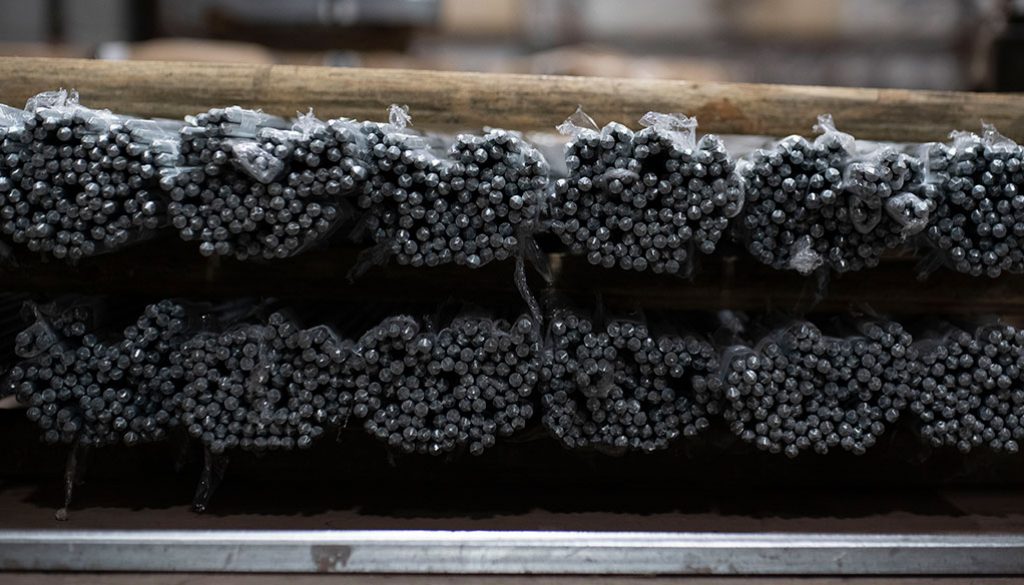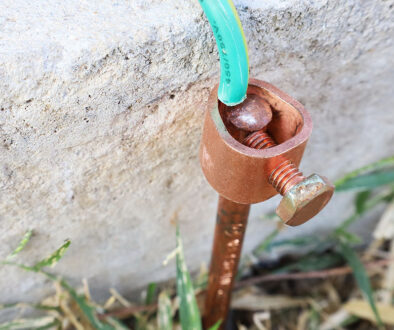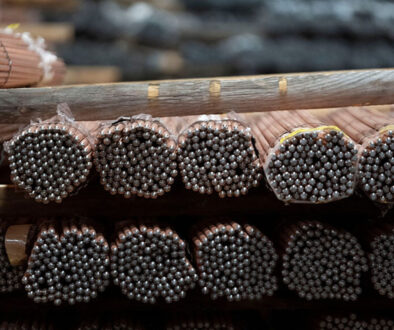Rebar Grounding Rods: Can They Be Used?
Saving money and staying on budget is the goal of builders and contractors alike. When facing a pile of leftover materials, it’s tempting to find ways to repurpose them. Using the materials you already have on hand can cut costs and minimize down time spent waiting for new materials to arrive.
But, when it comes to your grounding system, is reusing other materials really the best decision? In this post, we want to look at rebar specifically. Rebar is a great material for building reinforcement, but what about rebar grounding rods? Let’s dig into that question.
What Materials are Typically Used for Grounding Rods?
Grounding rods typically come in three materials: copper, galvanized steel, and stainless steel. Copper is a popular middle option. It is less expensive than stainless steel but more versatile than galvanized steel for grounding systems. We weigh the differences between these options in another post here.
Rebar is not an initial option for grounding. But when there is rebar left over from a different part of a build or project, it’s easy to look for options to repurpose it. Using the rebar as grounding rods is a popular choice. But, rebar grounding rods are not the same thing as regular galvanized steel grounding rods, and don’t yield the same results.
What’s the Difference Between Galvanized Grounding Rods and Rebar Grounding Rods?
It might seem like grounding rods made out of galvanized steel and rebar would be interchangeable, but they aren’t.
Galvanized Steel Grounding Rods: Solid, Smooth, and Strong
Galvanized steel grounding rods are solid, single pieces of steel. They are hot-dip galvanized with zinc to protect against corrosion and have a smooth surface. The smooth surface is important because it has less resistance when driven into the ground. It also creates a corrosion-resistant seal. It may not be as superior as copper or stainless steel for the purposes of grounding, but it will last a good decade before it needs to be replaced.
Rebar Grounding Rods: Rough Around the Edges
While galvanized grounding rods are one solid piece of steel, rebar grounding rods are scraps of rebar that have been welded together. Rebar is galvanized steel reinforced with extra steel bars. It is strong, especially when used in concrete. But, it isn’t the best option for going into the earth. The process of welding the steel together to form the rebar does not leave the surface smooth. It can be quite jagged, which can make driving it into the ground more difficult. It can also be soft, making it susceptible to bending.
Additionally, the lack of the solid seal that the standard galvanized steel rods have means rebar corrodes quickly when in direct contact with moisture. Rebar’s intended purpose is to be encased in concrete as a support system. Placing it directly in the ground is using it for a purpose it was not designed for, and it shows. Rebar is not corrosion resistant on its own, and the natural moisture of the soil will start to break it down soon after it comes into contact with it.
Revisiting the Point of Grounding Systems
To fully understand why grounding rods shouldn’t be made from rebar, we need to revisit the point of grounding systems.
Grounding systems are necessary because they reduce static electricity and allow it to flow back to the Earth. This protects the building and its occupants from electrical surges, voltage spikes, and other damage that can come from a rogue electrical current.
Another Consideration with Rebar Grounding Rods: Conductivity
For a grounding system to be effective, it needs to have good conductivity. Rebar does not have as much conductivity as the more common grounding rod options. It is not as effective at dissipating static electricity. A grounding system made up of rebar may not reliably perform its job if an electrical surge did happen. Most people are not willing to take that risk, even to cut costs.
Reusing Rebar in Other Ways
While rebar may not be the best choice for grounding rods, there are other ways you can reuse rebar on your project site. Rebar is a fantastic reinforcement option. Whether you have additional concrete to pour around the building, such as in a walkway or outdoor stairs, or have structural work still to do, there’s always a use for a strong material like rebar. Just maybe keep it contained within other materials.
When it comes to grounding your project, stick with copper, galvanized steel, or stainless steel rods. They may cost more, but they will provide a better, more effective grounding system for your project. In the long run, that investment will save you and your customers time and money.
Southern Grounding is Here for You!
If you are worried about how to source the best grounding materials for your project while staying within your budget, call our team at Southern Grounding. Whether you’re starting from scratch or need the right materials to complete your grounding system, our experienced team can make the best recommendations. We know the questions to ask to make sure the materials you use are suited to your project and your budget.
Learn more about us at southatlanticllc.com/southern-grounding or contact us today. We look forward to working with you on your grounding project!




